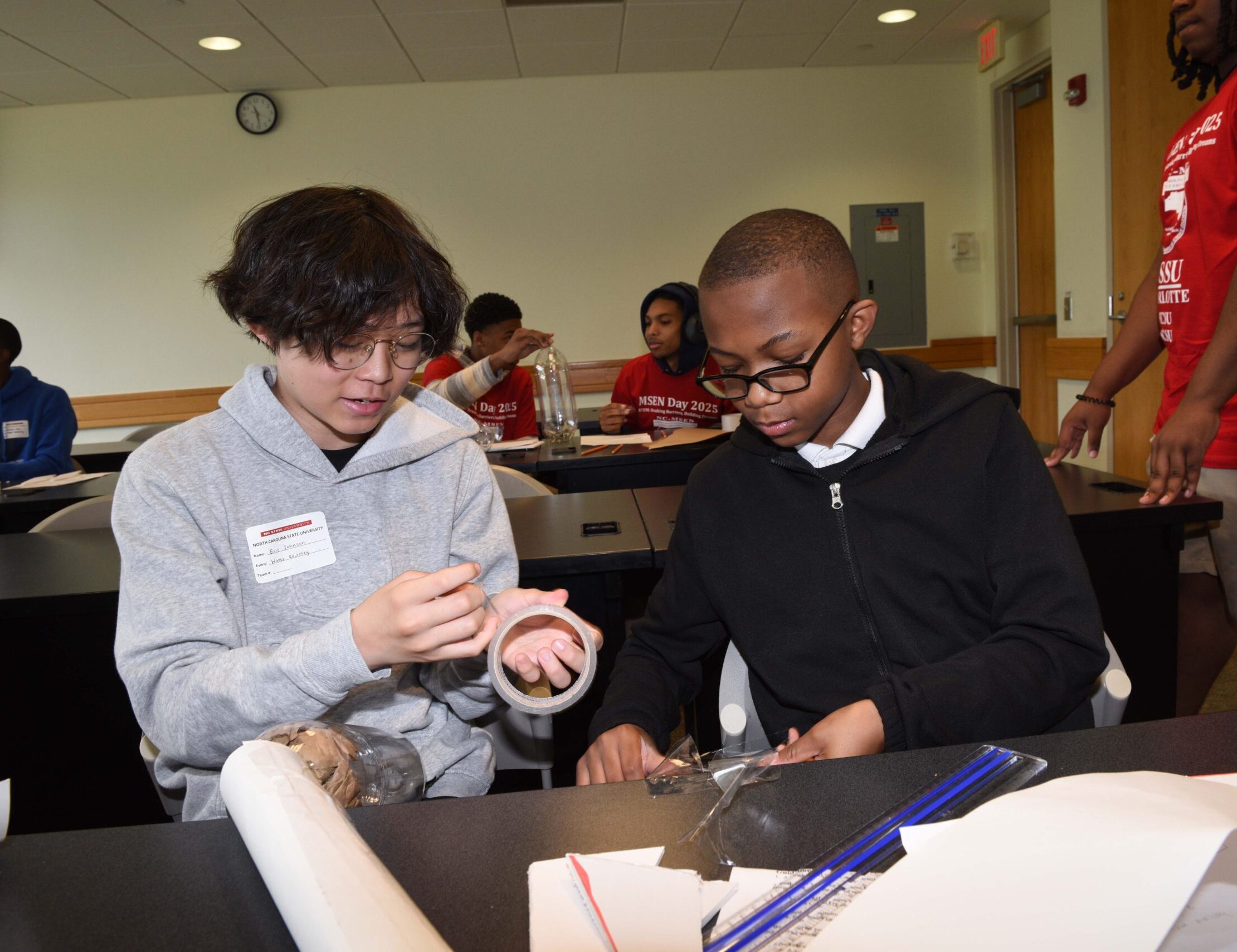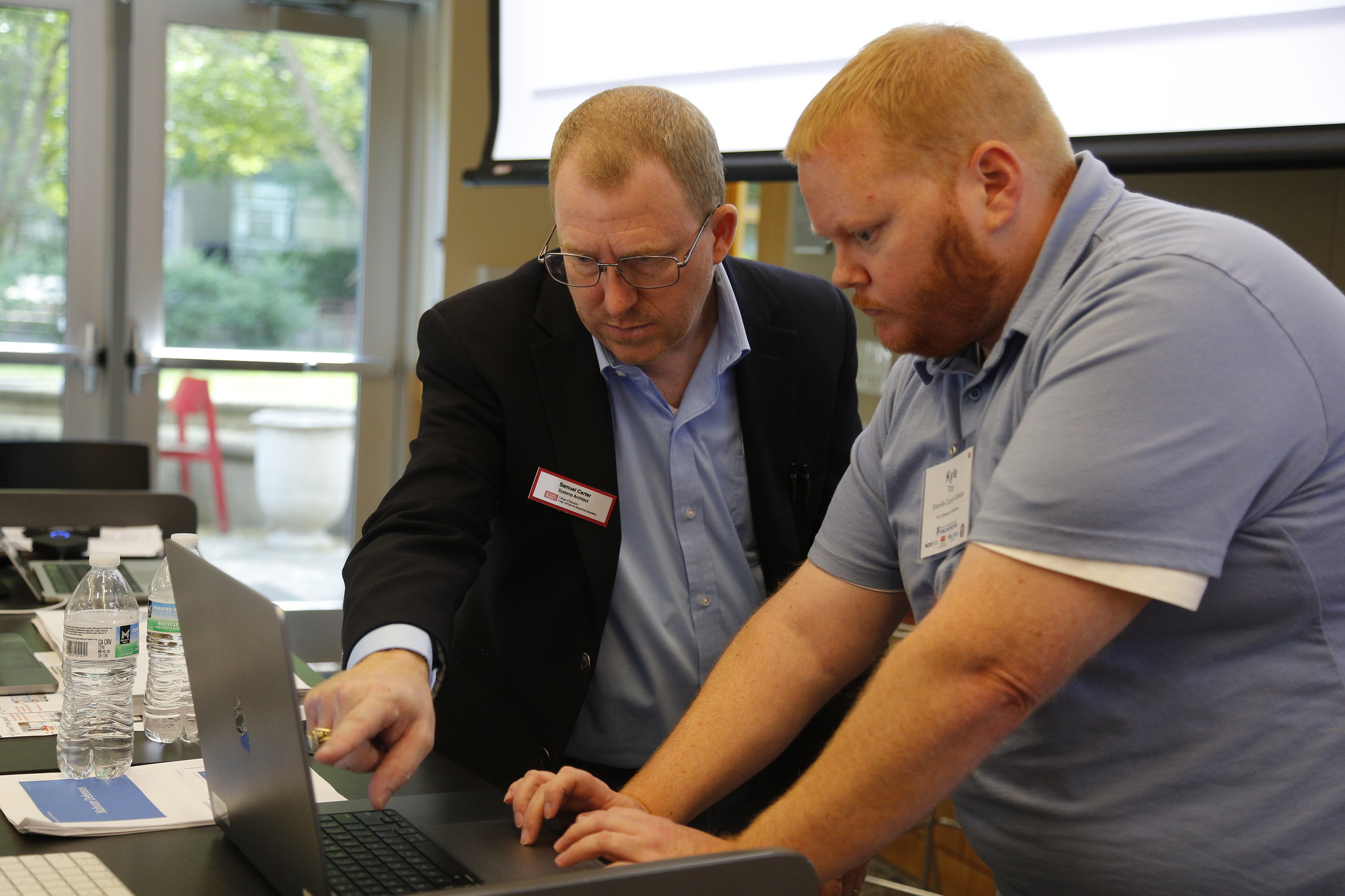A Deep Dive Into the Advanced Teaching Roles Program
 Teachers are at the heart of our educational system, therefore it is imperative that educational leaders support and retain talented educators. Advanced Teaching Role (ATR) models provide multiple avenues to do this. Highly effective teachers are drawn to these positions that allow them to develop as professionals, collaborate with others and be recognized for their expertise. When educators are given the support they need to advance their careers, not only do educators benefit but so do students.Through funding from The Belk Foundation, the Friday Institute for Educational Innovation conducted a deep dive into three pilot districts—Charlotte-Mecklenburg Schools (CMS), Edgecombe County Public Schools (ECPS) and Pitt County Schools (PCS)— implementing the ATR program to learn why some aspects of the program led to improvements in recruitment and retention, stabilization of school culture and gains in student outcomes while some aspects did not. Findings were shared in the Teaching for the Long Haul report.On Feb. 2, the Friday Institute hosted a webinar featuring leaders from the districts in the report. Panelists included Amy Sullivan, Director of Talent Acquisition at Charlotte-Mecklenburg Schools; Seth Brown, Ph.D., Director of Educator Support and Leadership Development at Pitt County Schools; and Erin Swanson, Director of Innovation at Edgecombe County Public Schools. More than 200 people registered for the event. Friday Institute Executive Director Hiller A. Spires, Ph.D., The Belk Foundation Executive Director Johanna Anderson and North Carolina Department of Public Instruction State Superintendent Catherine Truitt provided opening remarks. Moderator and Friday Institute Research Associate Callie Edwards, Ph.D., led the conversation about the value of the advanced teaching roles program and recommendations for those interested in implementing the program in their districts. Here are highlights from that conversation.:
Teachers are at the heart of our educational system, therefore it is imperative that educational leaders support and retain talented educators. Advanced Teaching Role (ATR) models provide multiple avenues to do this. Highly effective teachers are drawn to these positions that allow them to develop as professionals, collaborate with others and be recognized for their expertise. When educators are given the support they need to advance their careers, not only do educators benefit but so do students.Through funding from The Belk Foundation, the Friday Institute for Educational Innovation conducted a deep dive into three pilot districts—Charlotte-Mecklenburg Schools (CMS), Edgecombe County Public Schools (ECPS) and Pitt County Schools (PCS)— implementing the ATR program to learn why some aspects of the program led to improvements in recruitment and retention, stabilization of school culture and gains in student outcomes while some aspects did not. Findings were shared in the Teaching for the Long Haul report.On Feb. 2, the Friday Institute hosted a webinar featuring leaders from the districts in the report. Panelists included Amy Sullivan, Director of Talent Acquisition at Charlotte-Mecklenburg Schools; Seth Brown, Ph.D., Director of Educator Support and Leadership Development at Pitt County Schools; and Erin Swanson, Director of Innovation at Edgecombe County Public Schools. More than 200 people registered for the event. Friday Institute Executive Director Hiller A. Spires, Ph.D., The Belk Foundation Executive Director Johanna Anderson and North Carolina Department of Public Instruction State Superintendent Catherine Truitt provided opening remarks. Moderator and Friday Institute Research Associate Callie Edwards, Ph.D., led the conversation about the value of the advanced teaching roles program and recommendations for those interested in implementing the program in their districts. Here are highlights from that conversation.:
The Value of the Program
During the webinar, district leaders shared their perspectives on the value of the ATR pilot program in their districts, including its impact on teacher retention, student achievement, instructional quality and support.
- Teacher Retention
Brown said that investing in his teacher leaders has paid dividends for everyone—especially the teachers. One of his facilitating teachers told him that she appreciated the value the program brought to her both professionally and personally.
“I’m not gonna lie,” she said. “The compensation of pay was definitely a bonus. But the experience and training I’ve received is priceless. Some of my best memories and experiences as an educator so far are because of my experiences as a facilitating teacher. The training and practice I’ve received have made me a better educator and, honestly, a better person in general, and that is because I’ve been granted the opportunity to lead and learn.” Also, beginning teachers will see those opportunities coming down the pipeline and might be more motivated to stay, Brown said.
- Student Achievement
At ECPS, Swanson has seen student achievement increase, with 12 of their schools meeting or exceeding growth in the 2018-19 school year, up from six in 2016-17. She said that this growth has been a real catalyst for school redesign too.
- Instructional Quality and Support
One major value of the program at ECPS has been the support principals receive and the instructional leadership opportunities multi-classroom leaders have.
Brown said that if districts are relying on principals to be the solo hero and save a school, then they are set up for failure. Instead, relying on a team of educators will yield better results. When you add assistant principals, facilitating teachers, multi-classroom teachers and collaborating teachers into the mix, then you increase both instructional quality and support while allowing principals to focus on other strategic tasks to continually improve.
Recommendations for Implementation
- Get Started
If you’re interested in this program, Brown recommends getting started now. Start talking to your leaders, your school improvement team and those like Brown, Sullivan and Swanson who already have experience with the ATR program. Leaders don’t have to wait on a grant or reinvent the wheel to get started. They can learn from others’ mistakes and failures to create the best program for their learning community.
- Communicate Early and Often About the Goals of the Initiative
Encourage school leaders to share their vision of the ATR model at multiple points throughout the year, Sullivan said. As new teachers are hired, make sure everyone has a shared understanding about the initiative goals. Communication was one of the challenges teachers faced across multiple districts during the Friday Institute’s evaluation of the ATR program. Many did not understand what the leadership roles in the ATR program were, what its purpose was, and were hesitant to apply for the roles. Staff should also be given the opportunity to vocalize their thoughts, questions and concerns regarding the impact of the ATR model on their school.
- Allow Time to Gauge Your Impact
Change does not happen overnight, and implementation success takes time. This time can vary by district, but on average, the three districts represented in this webinar and report did not see measurable indicators of success for at least a year. In fact, they are still tweaking their formulas for success years after implementing the pilot program. Even after receiving the grant, the districts needed to wait for the right time to pull teachers from the classroom and into these advanced roles.
- Have Professional Development Aligned to Leadership Skills
Althoughpedagogy is important for educators to continue to develop, teacher leaders also need leadership development to grow into their roles and in this program. ECPS found that pairing the ATR program with another leadership development program helped develop educators with leadership potential who might not initially qualify for leadership roles. Brown said his district’s focus wasn’t on student achievement at first but on adult learning, which is an essential piece that has to be maximized for the program to work.
- Be Flexible/Allow for Personalization
The ATR program is not a one-size-fits-all solution. District leaders should give autonomy to their school design teams to create a program that will work best and meet the needs of their school. Design teams should consider what opportunities to seize on, such as what the roles offer and how they’re structured, and then design and implement the program to create those opportunities.
To watch a full recording of the webinar, visit the event page here.
- Categories:


